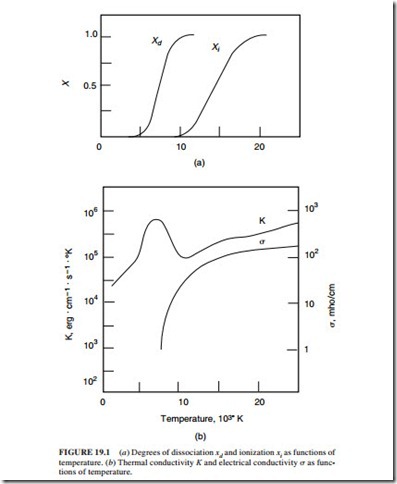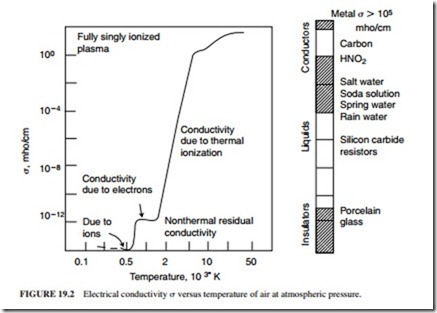THEORY OF CIRCUIT INTERRUPTION
A circuit breaker is a device that switches on and switches off electric circuits during normal as well as abnormal operating conditions. During the making or breaking of the switching contacts, there is a transition stage of arcing between the contacts. The study of this phenomenon is of great importance for understanding the design and operational char- acteristics of circuit breakers.
PHYSICS OF ARC PHENOMENA
Discharge in ac circuit breakers, generally in the form of an arc, occurs in the following ways:
1. When the contacts are being separated, arcing is possible even when the circuit emf is considerably below the minimum cold electrode breakdown voltage, because of the large local increase in voltage due to the circuit self-inductance.
Note: This way of drawing arc is common to both dc and ac circuit breakers.
2. In an ac circuit breaker, the arc is extinguished every time the current passes through zero and can restrike only if the transient recovery voltage across the electrodes already separated and continuing to separate reaches a sufficiently high value known as the breakdown voltage.
The arc phenomenon depends upon
● The nature and pressure P of the medium
● The external ionizing and deionizing agents present
● The voltage V across the electrodes and its variation with time
● The nature, shape, and separation of electrodes
● The nature and shape of the vessel and its position in relation to the electrodes
An ideal gas is a pure dielectric because it consists of molecules which are electrically neutral. It can be made to conduct only when some means are employed to create free elec- trons and ions in the gas.
When the gas temperature increases significantly, the molecules start to break down at the most severe collisions and dissociate into their atoms. Energies of 9.7 eV and 5.1 eV, respectively, are needed to dissociate an N2 and an O2 molecule.
At higher temperatures, some molecules and atoms are deprived of an electron and the hot gas called plasma becomes a conductor.
Figures 19.1 and 19.2 show the variation of the degree of dissociation xd, the degree of ionization xi, thermal conductivity K, and electrical conductivity with temperature.
Note: The free electrons which are caused by high temperature can carry an electric current under an electric field in roughly the same way as do the free electrons in a metal (the elec- trical conductivity of a metal is due to the existence within it of free conductivity electrons).
Arc Interruption Theory
In circuit breakers, the modes of arc interruption are high-resistance interruption and low- resistance or current zero interruption.
High-Resistance Interruption
The arc is controlled in such a way that its effective resistance increases with time, resulting in a decrease in current until it cannot be maintained. The arc resistance can be increased by lengthening, cooling, and splitting the arc.
Low-Resistance or Current Zero Interruption
In an alternating current, every time the current passes through zero, the arc extinguishes for a brief moment and again restrikes with the rising current. The reestablishment or interruption of the arc is an energy balance process.
If the energy input to the arc, subsequent to the current zero, continues to increase, the arc restrikes; if not, the circuit is interrupted.
Related posts:
Incoming search terms:
- circuit interruption
- arc interruption theories pdf
- physics of arc interruption
- current zero interruption theories
- current interruption theories
- Arc interruption theory
- theory of circuit interruption
- arc control devices in theory of circuit interruption
- arc interruption theory PPT
- theory of current interruption
- Current interruption modes
- theory of arc interruption
- two theories which explain the phenomenon of arc extinction:
- current interruption in ac circuit breaker
- current interruption mode
- high resistance inter
- energy balance theory of arc interruption in circuit breaker
- energy balance theory in circuit breaker
- define circuit interruption
- current zero interruption
- high resistance interruption
- numerical problems on high resistance interruption
- define Current interruption theories
- arc inturuption theory
- chances of interruption in subsequent current zeros
- interruption of a circuit
- mode of intrruption of circuit breaker
- how current inturuption on ac ckt breaker
- mode of interruption of circuit breaker ?
- discuss d c and a c arc phenomena notes
- Energy balance theory for current zero interruption
- Energy balance theory for current zero interuption
- interuption theories
- https://yandex ru/clck/jsredir?from=yandex ru;search;web;;&text=&etext=1825 mId7RDjZG7aDLLuq4L9W2OY5JeRoX3A8pOxrUfgEkIsjriO_MLlN7Hqd6DRCBw0a6PlB2P6LP8pUojkuNpv9UQ 81e1b0482ac7a0175bae14fa4567cf632b4bff6a&uuid=&state=_BLhILn4SxNIvvL0W45KSic
- Explain theory of circuit interruption
- meaning of arc extinction in cb
- current interruption in ac
- arc interuption in circuit breakers
- arc interuption theory
- Arc intreputtion theories
- arc irteraption
- arc phenomenon in circuit breaker
- what is the physics of arc phonomena
- circuit intruption
- current interruption theory#spf=1
- current interruptions theories
- current zero
- current zero interrupti
- current zero interruption in circuit breaker
- current zero interruption means

